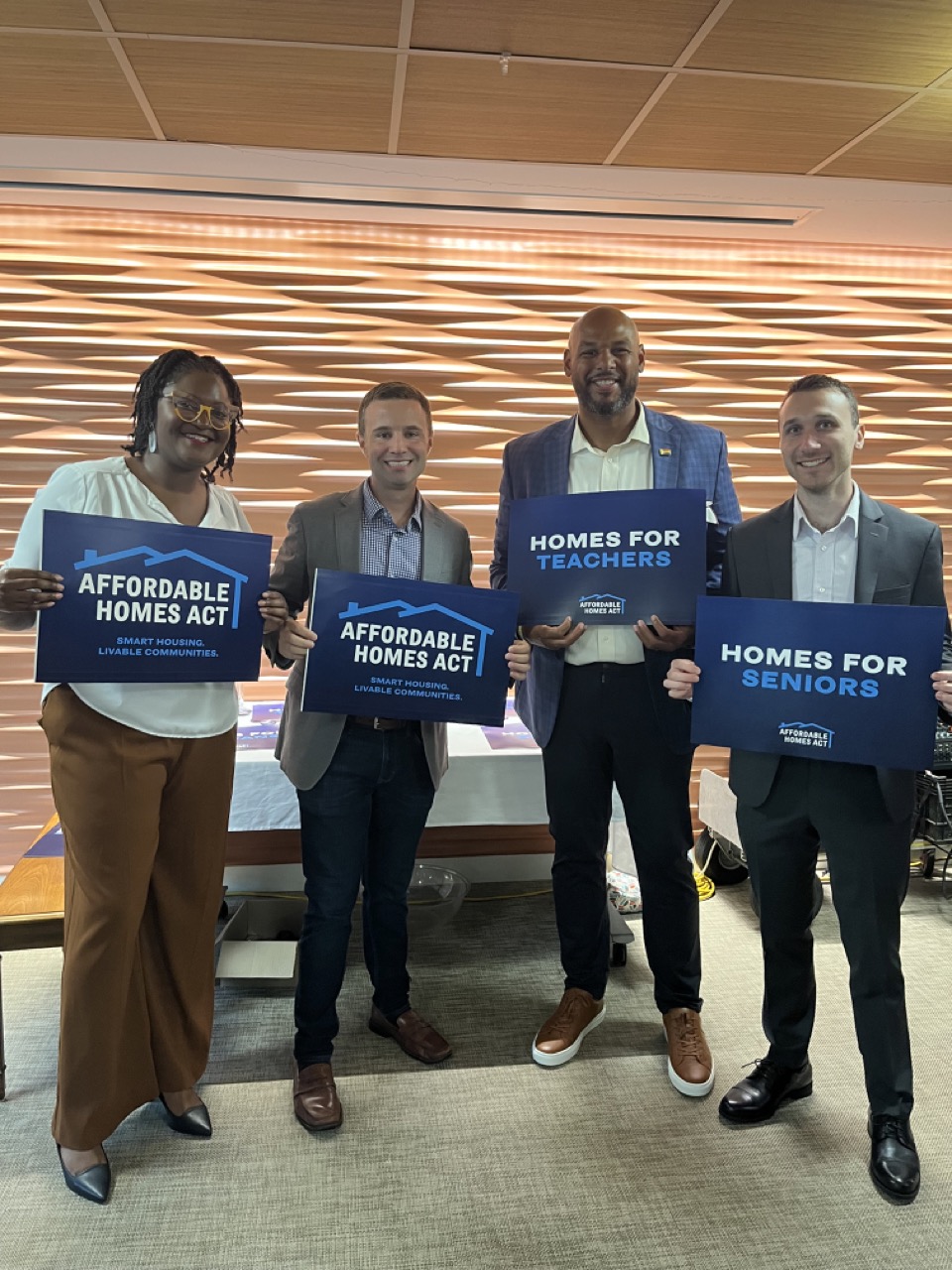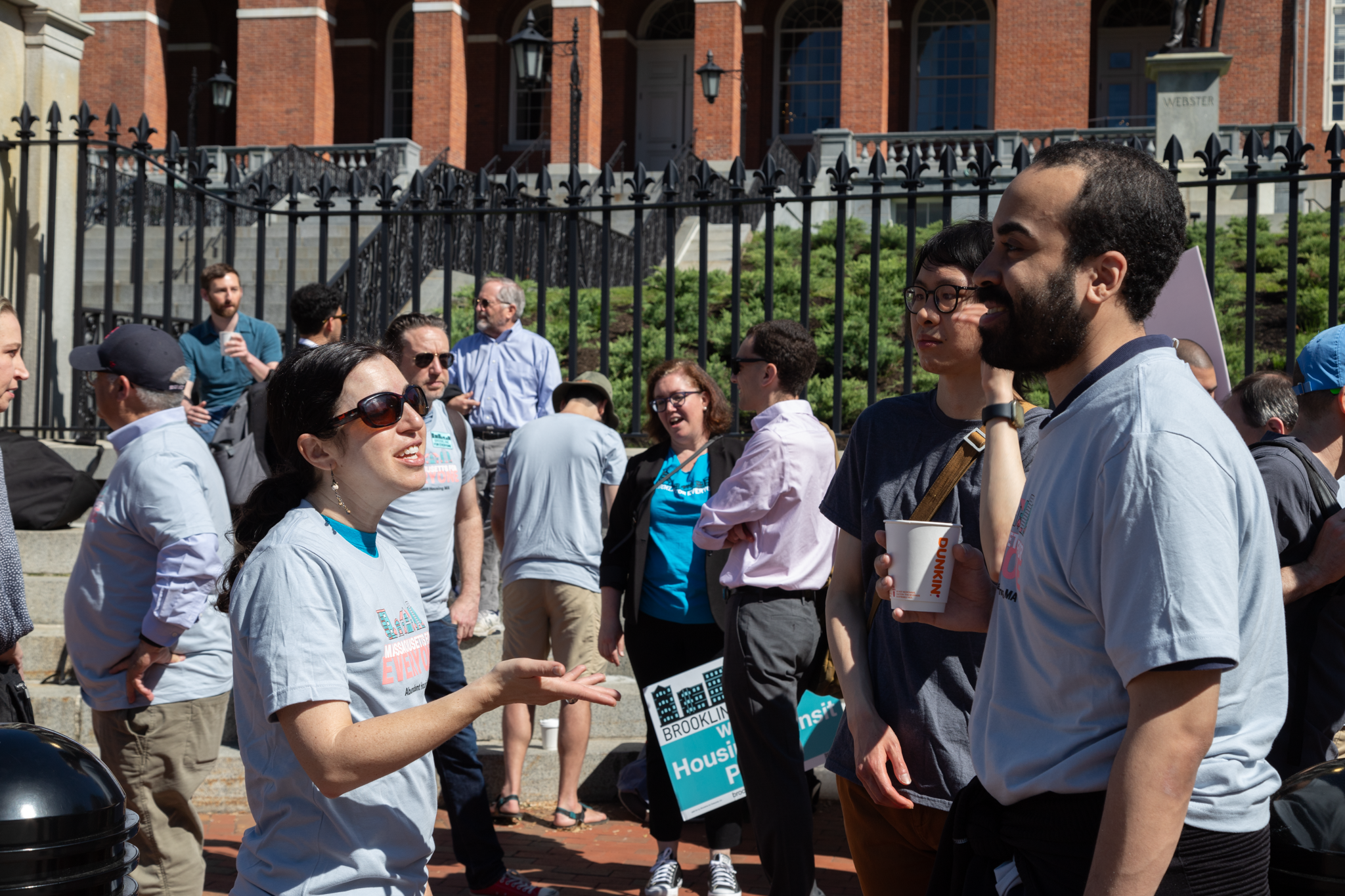by Mike Kriesberg
After 9 long months of advocacy, Governor Maura Healey signed the Affordable Homes Act into law this past Tuesday, August 6th. This historic $5.16 billion spending authorization plan also includes several policy changes, including the legalization of Accessory Dwelling Units (ADUs) in all single-family zoned districts statewide. I am so thankful to have played a part in this effort and am deeply appreciative of my colleagues, peers, and legislative partners who worked for years on making this possible.

While there is still much to do, now feels like an appropriate time to reflect on the 2023-2024 legislative session and consider where we as an organization and the pro-homes movement, go from here.
First, some positives. There is a clear consensus on Beacon Hill that the state legislature needs to take major action to address the housing crisis, and what’s more, there is a growing recognition that the root cause of the crisis is a severe housing shortage.

Within this context, production-oriented solutions like zoning reform are now considered essential features of any comprehensive effort to address the unaffordable home prices plaguing MA residents.
Furthermore, exclusionary zoning rules are also now correctly identified by many legislators as a key barrier to building more housing and moderating home prices, not to mention the multitude of other possible social and environmental benefits. As a result, two out of the last three legislative sessions have featured state-led action to reform local zoning to allow for more homes and a greater variety of homes. The MBTA Communities Act and the legalization of ADUs should be seen as promising indications of the legislature’s willingness to challenge the exclusionary zoning systems built up by cities and towns across our state.

However, this session also revealed troubling patterns that could spell trouble down the road. The first is the legislature’s penchant for waiting until the last days and nights of the legislative session to act on key bills. While the Affordable Homes Act made it through, several other high-priority initiatives did not. We were (for lack of a better word) lucky that the AHA was the top priority of the Governor. Going forward, that may not be the case.
Second, is the resistance shown by some cities and towns to the MBTA-Communities Act. Of course there are the standout examples of towns refusing to comply with state law, but the more concerning trend is municipalities passing zoning plans that technically comply, but will lead to few new homes actually being built, because they rezone already built-up areas. This “paper-compliance” is unfortunately part of a larger, national trend of cities and towns undermining the intent of state-led zoning reform efforts. Witnessing this play-out in real time is a useful reminder that passing legislation is not enough. Even more energy must be directed towards ensuring that the legislation affects real change. In the case of our work, that means creating zoning plans that will actually lead to new homes being built.
Which brings me to where we go from here. We must be clear-eyed about what can – and cannot – be accomplished at the state level. The state has an indispensable role to play in setting an acceptable base level of zoning that allows for the variety of homes that Massachusetts residents need. The potential impact of statewide zoning reform is exemplified by the ADU change, which alone is projected to create between 8,000-10,000 new homes over the next five years. At AHMA, we will always work to raise that standard and ensure that it translates to more homes.
But, we also recognize that many cities and towns will pursue and find increasingly creative ways to undermine state-led initiatives. As such, we must continue to prioritize grass-roots organizing, and then support those advocates in advancing local pro-housing policies. When we organize effectively, incredible changes are possible. To see this, look no further than the MBTA zoning plan passed in Watertown and led by AHMA affiliate Housing for All Watertown. Their zoning plan has a by-right unit capacity of 3,133, which is roughly 84% greater than is required by the state.
Our ability to create the future we want will hinge on how successfully we build a movement that effectively and strategically uses the different levels of government. If we do this, we can build welcoming and diverse communities affordable to families and individuals. We can break down enduring barriers to racial and economic integration and build sustainable communities to be enjoyed for generations to come.


